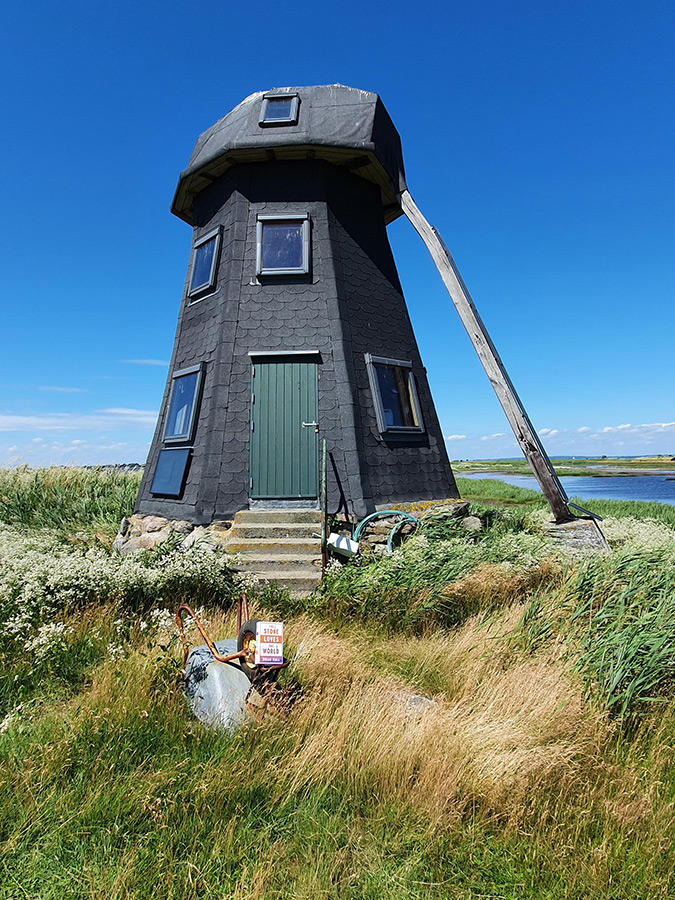The reason Denmark shows up in two of my novels is that I have a friend there, whom I first met thirty-nine years ago in Greece. I had been cycling solo for nine months, and he was cycling with his partner, and I shamelessly threw myself on the two of them because Christmas was three weeks away and I didn’t want to spend it alone. Ten years ago, when I was writing early notes for The Stone Loves the World, I consulted with this friend on Danish windmills, because I already knew that I wanted my character, Thomas, to be living in one. My friend knows a lot about Danish mills, because he knows a lot about pretty much every aspect of Danish culture and history. He showed me photographs and diagrams of various examples, and recommended that I visit a couple of refurbished mills in the vicinity of his home.
The mill that I fell in love with, however, was one I glimpsed from the deck of a ferry as it was passing the small island of Hjortø, off the southern coast of Funen. The mill was a dark shell without sails standing at the edge of the sea, separated from the rest of the island by a marsh. I could barely make it out in the gloomy rainy weather—it looked like a lighthouse pretending to be a mill, or a mill quixotically trying to behave like a lighthouse. The thing was tiny, but in its sepulchral lonesomeness it seemed grandly romantic.
I don’t name Hjortø in the novel, but I describe it exactly as it is, and place the mill precisely where it stands. While I was writing, someone in the real world, like my character Thomas, fixed up the mill for habitation—although the actual owners didn’t put the sails back up. When my novel was published, I sent a copy to my friend. He sails in Danish waters every summer, so he tied his boat up at the Hjortø landing, hiked across the island, and took this photograph of Thomas’s mill as it appears today.

